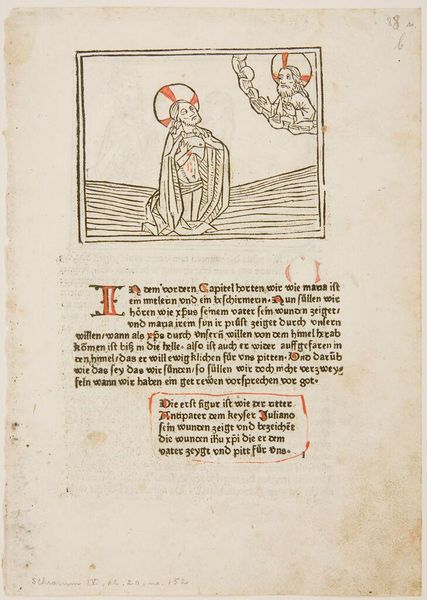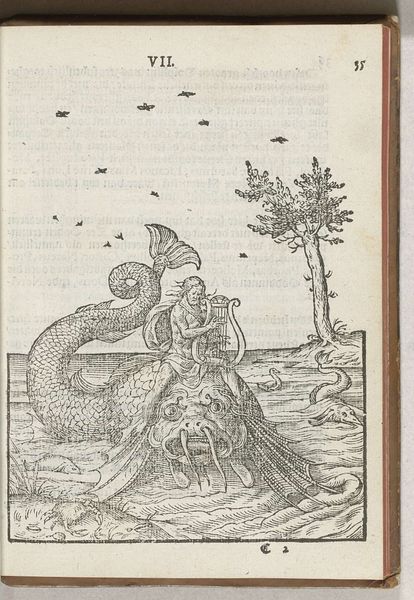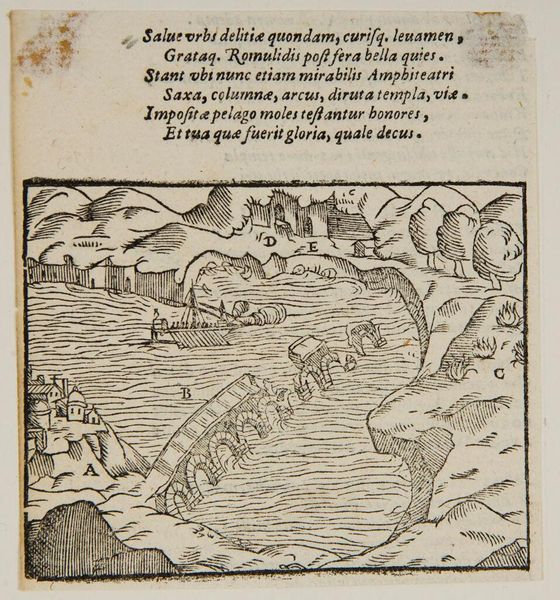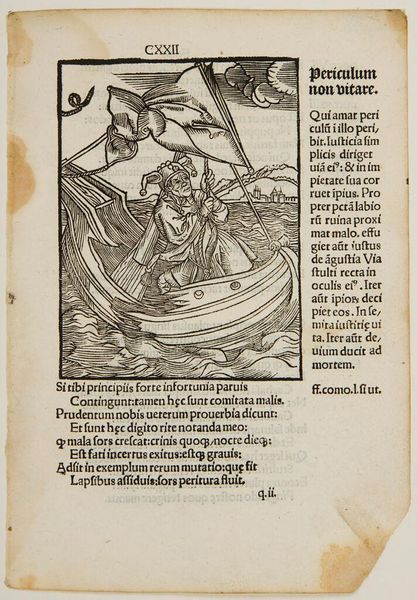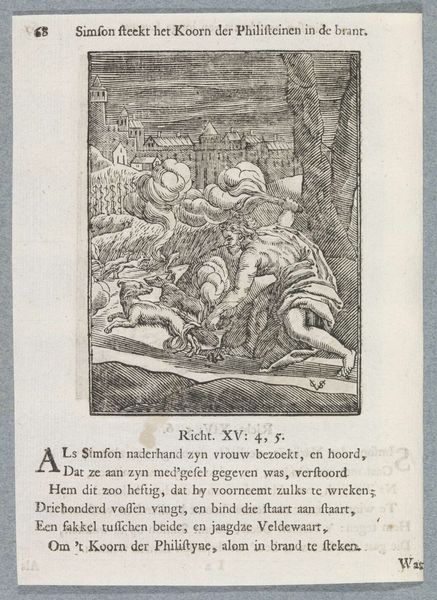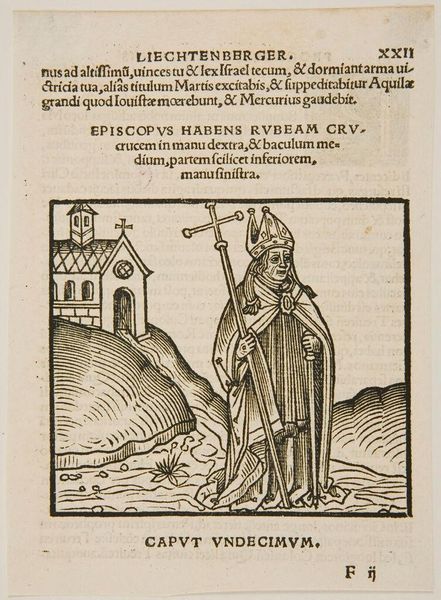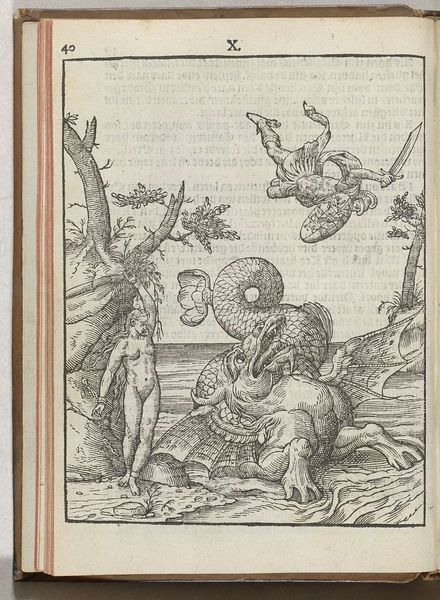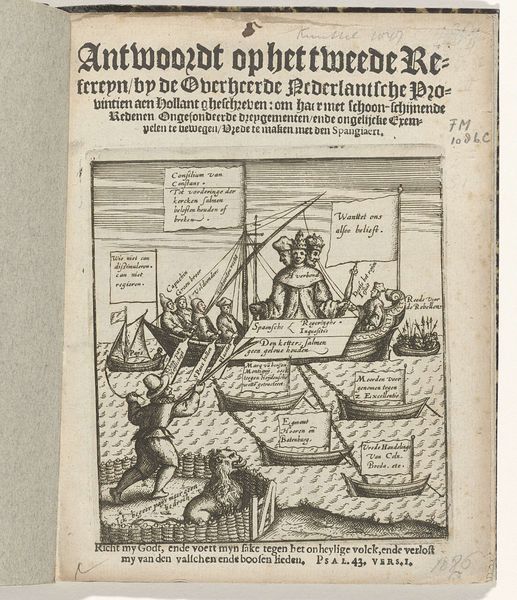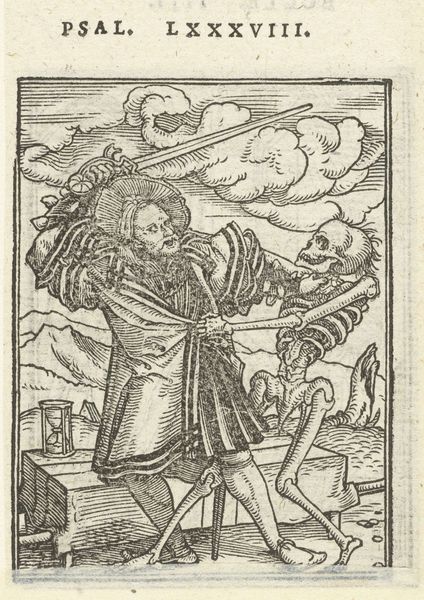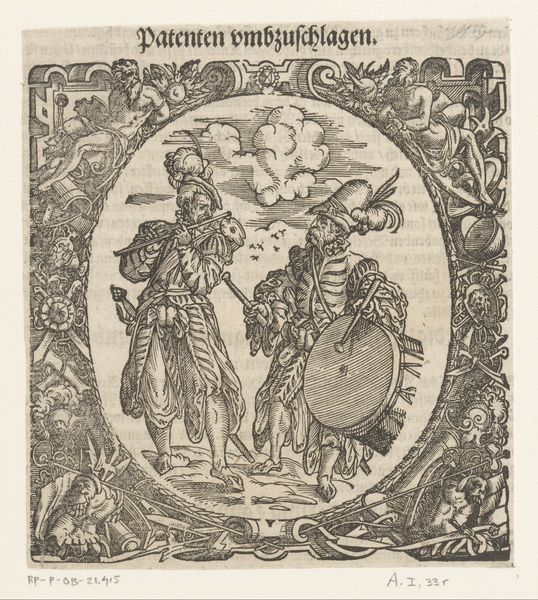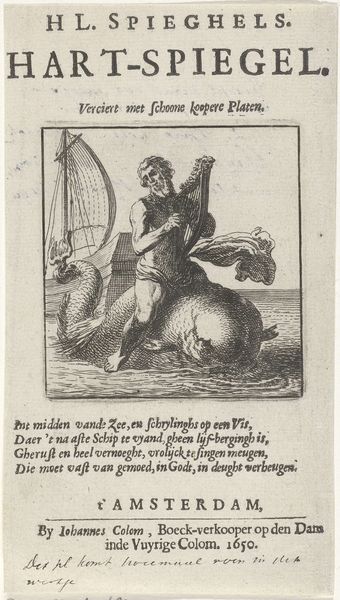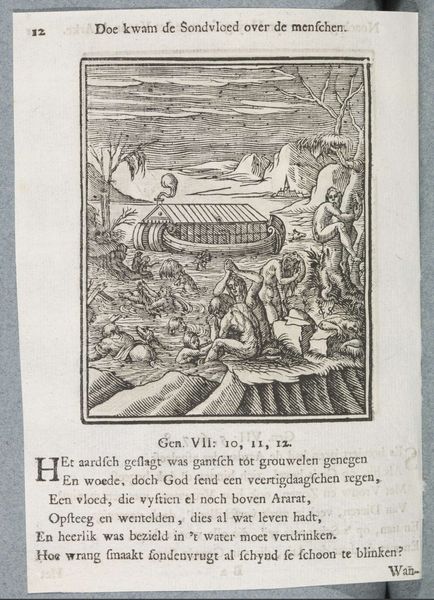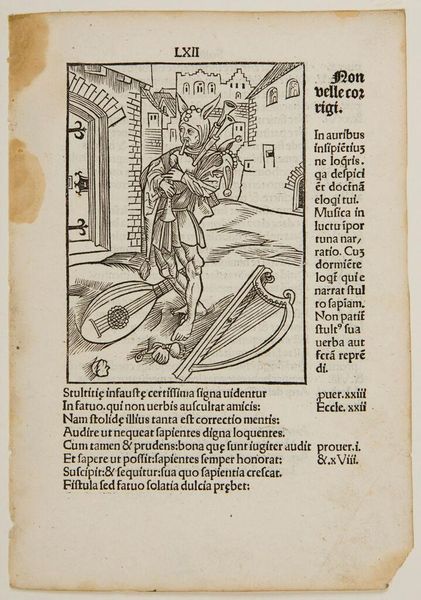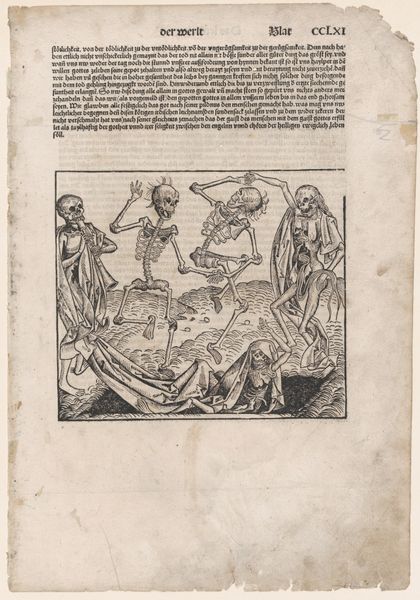
Kadaver van een griend aangespoeld op het strand tussen Scheveningen en Katwijk, 20 september 1608 1608
0:00
0:00
print, woodcut, engraving
# print
#
landscape
#
woodcut
#
genre-painting
#
engraving
Dimensions: height 161 mm, width 135 mm
Copyright: Rijks Museum: Open Domain
This print, made in 1608 by an anonymous artist, depicts a beached whale between Scheveningen and Katwijk. It's rendered in woodcut, a process where the artist carves an image into a block of wood, then applies ink to the remaining raised surface. The whale dominates the composition, its decaying form starkly contrasted against the turbulent sea and jagged coastline. The social significance lies in the whale itself. The artist may have wanted to point to the tension between the Dutch and the Spanish. The text in the artwork hints at the whale originating from Spain, and references the Spanish inquisition. In the 17th century, whale strandings were not only natural events, but also opportunities. The blubber could be rendered for oil, the bones used for tools and construction. This print, with its meticulous detail and accompanying text, offers a glimpse into the intersection of natural resources, manual labor, and economic activity in the early modern period. Ultimately, this image reminds us of the interconnectedness of materials, making, and cultural values.
Comments
No comments
Be the first to comment and join the conversation on the ultimate creative platform.
